
It began when Martin Luther posted his theses, sparking changes in church history. Although denominations split, they kept some traditions, like special church clothes. Ecclesiastical Sewing preserves these traditions by making church clothes for different churches. Studying church history helps us see what’s the same and what’s different. Ecclesiastical sewing is a way of making beautiful things for God.
Like this:
Like Loading...
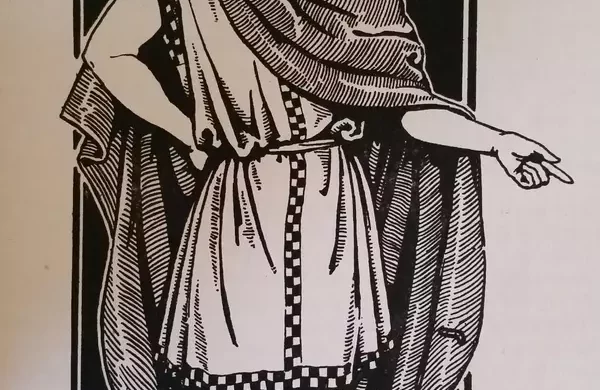
Like the majority of modern ecclesiastical vestments, the cope has its origins in ancient garments. The Cope–Norris, unlike other vestments, is a bit of a mystery. With an unknown origin, its ancestor could be either the garment known as a paenula, the lacuna, or the buyers.
Like this:
Like Loading...

September 14th is noted as Holy Cross Day, which is celebrated in both Eastern and Western Churches around the world. The Church of England marks this festival day with the use of the color Red. Holy Cross Day was introduced into the Lutheran Church-Missouri Synod in 1982, yet this festival may be unfamiliar to many Lutherans today. The history of this festival dates back to the time of Constantine and his mother, St. Helena.
Like this:
Like Loading...

The Pallium-Herbert Norris History The Pallium-Herbert Norris: From the 6th century till the 1st century B.C., the Greeks wore a particular linen or wool garment. People of the working… Read more The Pallium-Herbert Norris →
Like this:
Like Loading...

he Alb is a vestment that can trace its origin to six ancient garments: the Kolobus, the Tunica, the Colobim, the Tunica Talaris, the Subucula, and finally the Tunica Alba. These garments were common in Greek or Roman times, some garments being used by both cultures. They are not six manifestations of one garment, but rather six that are distinct enough to make note of the differences.
Like this:
Like Loading...

Cloister is a reversible symbolic pattern that dates from around the year 1900. If one looks closely, it is easy to see the two main design features of the Scottish Thistle and the English Rose which were popular at that time. Cloister is a lighter-weight ecclesiastical fabric that would work well for making stoles, chasubles, tunics, dalmatics, chalice veils, and other vestment pieces. Cloister would work well with machine embroidery when the proper stabilizers and backings are used.
Like this:
Like Loading...

In the late 1800s, Mary Barber created a lovely collection of many examples of Opus Anglicanum.
Like this:
Like Loading...
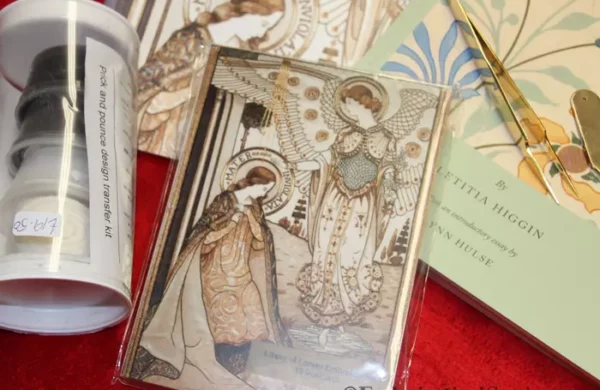
Wishlist of the Royal School of Needlework for years, plans were cancelled by scheduling conflicts. Yet, browsing to their online store provided a silver lining. The Handbook of Embroidery catalog and some enticing embroidery While missing out the classes, the excitement of exploring these ecclesiastical embroidery treasures brings comfort.
Like this:
Like Loading...
The Clergy presiding over the service wore matching cream-colored vestments with tapestry orphreys. Another clergy wore vestments such as surplices, dalmatic, tunic, and chasuble, according to their role and position within the church. Clergy robed in matching white chasubles lined the stairs to pay their last respects as the flag-draped coffin left the Cathedral
Like this:
Like Loading...
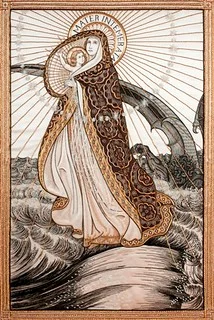
The Royal School of Needlework has an exhibit titled: ‘For Worship & Glory’ taking place at Chester Cathedral, 3 – 28 February 2016. The highlight of the exhibit is six pieces of the famous Litany of Lorento embroideries, which were donated to the Royal School by the nuns from the now-closed Convent of the Holy Child in Mayfield East Sussex.
Like this:
Like Loading...
Ecclesiastical Sewing and Church vestment-making news from around the internet.
Like this:
Like Loading...
Happy New Year from Ecclesiastical Sewing! After a busy month of home remodeling and wedding preparations, the workroom turned into a wedding hub. From groomsmen alterations to bridesmaid dresses and vintage veil restyling, it was a flurry of activity. The remodeled space is now organized and lovely!
Like this:
Like Loading...
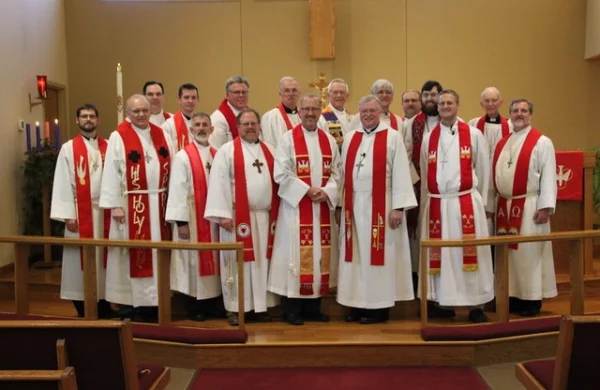
Within the Lutheran Church-Missouri Synod, red is the traditional liturgical color to be worn for installation service. And look at all of the lovely red stoles! Within our church body, it is tradition for pastors within the local circuit to attend the installation service of a brother pastor. At this installation service, there were a total of seventeen pastors vested in red stoles! There is a wealth and abundance in the variety of pastoral stoles.
Like this:
Like Loading...

The design motif for the Advent stole is a simple star worked in Cloth of Silver. This simple design would be great to work with an embroidery patch and heat press system. The stars are outlined with a satin stitch, and detail stitches are added in the centers. A few additional stitching lines may be added to create the rays that “shine on the place where the Christ Child lays.
Like this:
Like Loading...

Pentecost Stoles. The first design features crossed keys symbolizing the Office of the Keys. The red silk dupioni, design with gold and bronze metallic threads, blends beautifully with red and gold brocatelle fabric and metallic galloon trim. The upper chest will showcase a descending dove with flames. and the final design will include a Bible and Sword of the Spirit, connecting to the Holy Spirit. These red Pentecost Stoles offer a reasonable budget.
Like this:
Like Loading...

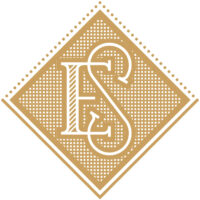











You must be logged in to post a comment.